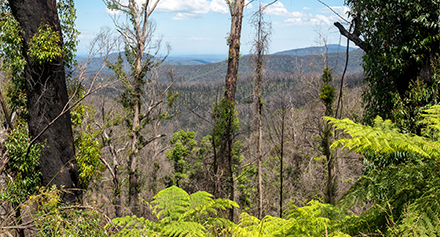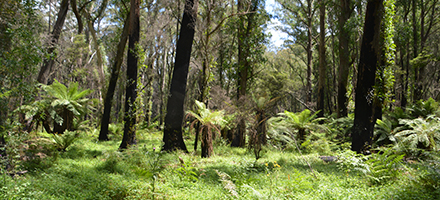Australia’s 2019-2020 Black Summer bushfires severely impacted hundreds of plant species. While the prospects of recovery for most appear to be good, some species remain vulnerable, according to research published by Australia’s national science agency, CSIRO, and the Centre for Australian National Biodiversity Research. Source: Timberbiz
Researchers compared remotely sensed satellite fire hotspot data with records of plant occurrence from herbarium collections to discover the plant species and ecosystems impacted in the burnt areas.
CSIRO researcher Dr Robert Godfree said the fires burned close to eight million hectares of forest, woodland and shrubland across the south-east of Australia. Many of the fires occurred in ecosystems that make up a globally significant biodiversity hotspot.
“The scale of these fires and the number of plant species and communities affected was unprecedented for the region,” Dr Godfree said.
The researchers found that 11 megafires each more than 100,000 hectares in size combined with many smaller fires to extensively burn 17 major vegetation types, including remnant rainforests and diverse eucalypt forests and woodlands.
More than 800 native plant species had more than half of their populations burn, with some experiencing fire across their entire ranges.
An unusual feature of the 2019-2020 fire season was that many widespread species were among those severely affected. The researchers also studied the bushfire recovery traits of more than 200 plant species and found that most, including many rare species, are resilient to fire.
“These results suggest that we can be a little more optimistic about the ability of many plant species to recover after the fires,” Dr Godfree said.
However, the researchers found that targeted recovery efforts will probably be needed to support vulnerable species that are killed by fire. These include epiphytic orchids, which grow on other plants and lost much of their habitat during the fires.
“Unburnt areas that contain these species are now scattered across the landscape and these take on added importance for conservation,” Dr Godfree said.
“The scale of the Black Summer bushfires has also clearly left some ecosystems at risk, particularly remnant Gondwanan rainforests. In some parts of NSW more than three-quarters of remaining rainforests burnt.
“Many rainforest species living in remnant forests that don’t often burn tend not to cope well with fire.
“The ranges of some of these species have potentially shrunk, leaving the populations very vulnerable to further disturbance and changes in climate.
“The scale of the fires also means that recovering populations of even widespread species may need additional assistance to prevent adverse impacts of disease, grazing by feral animals, and drought.”
Implications of the 2019–2020 megafires for the biogeography and conservation of Australian vegetation was published in Nature Communications. DOI: 10.1038/s41467-021-21266-5
The Centre for Australian National Biodiversity Research is a joint venture between Parks Australia’s Australian Na1onal Botanic Gardens and CSIRO.
Additional information on plant impacts
- The Black Summer fires burnt more than seven million hectares of eucalypt forests and woodlands and more than 300,000 ha of rainforest.
- An estimated 816 vascular plant species had more than 50% of their popula1ons or ranges burn.
- More than 150 species of native vascular plants are estimated to have experienced fire across 90% or more of their ranges.
- Species particularly vulnerable to the bushfires include epiphytic orchids, which grow on trees, and fire-sensitive rainforest species.
- More than three quarters of rainforest communities were burnt in parts of New South Wales. These contain many ancient Gondwanan plant lineages that are now only found in small, fragmented ranges.









